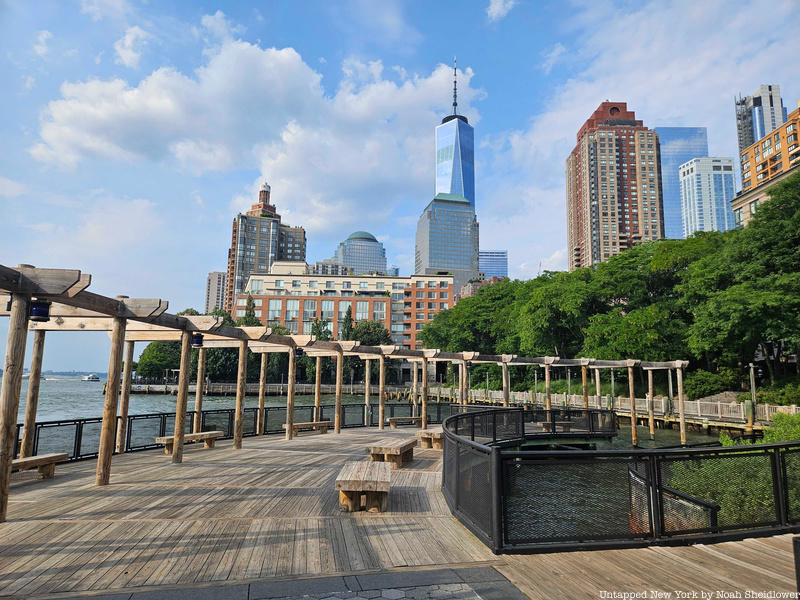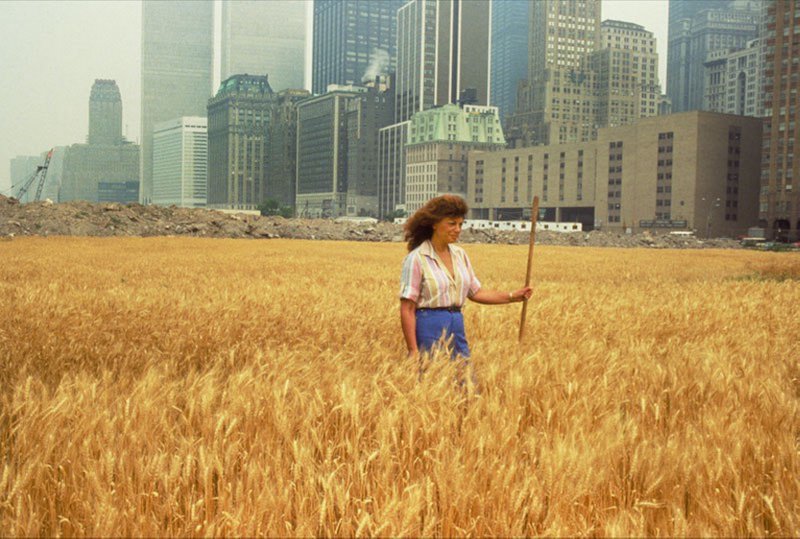
Battery Park City is one of Manhattan’s newest neighborhoods. Construction began in the late 1970s. The planned community at the southwest tip of Manhattan took its name from the Battery, a public park to the south which faces New York Harbor. With a third of the neighborhood occupied by parkland, it is seen by many as a quiet escape from the fast-paced stress of the Financial District. Many of the neighborhood’s buildings are just a decade or two old, especially those rebuilt following 9/11. Here are the top 12 secrets of Battery Park City!
1. Battery Park City Was Once a Wheat Field

Before Battery Park City housed the tall, modern buildings it does today, much of the land was temporarily a wheat field as part of an art installation. In 1982, artist Agnes Denes planted two acres of wheat on the newly formed land as part of a piece called Wheatfield — A Confrontation. The installation, which was sponsored by the Public Art Fund, brought attention to the abandoned and empty locations along the city’s waterfront. Around 285 furrows were dug by hand, each of which took over two hours. It took months to install a proper irrigation system and clear out rocks.
Ultimately, in August of that year, Denes harvested over 1,000 pounds of golden wheat as a commentary on the ecological crisis. Denes at the time described the piece as a “symbol, a universal concept. It represents food, energy, commerce, world trade, and economics. It refers to mismanagement and world hunger. It is an intrusion into the Citadel, a confrontation of High Civilization. Then again, it is also Shangri-La, a small paradise, one’s childhood, a hot summer afternoon in the country, peace. Forgotten values, simple pleasures.” Despite the success of the project, Denes remained in relative obscurity. Her work appeared in NYC again when her piece “The Living Pyramid,” a grassy ziggurat, appeared in 2015 at Socrates Sculpture Park.





